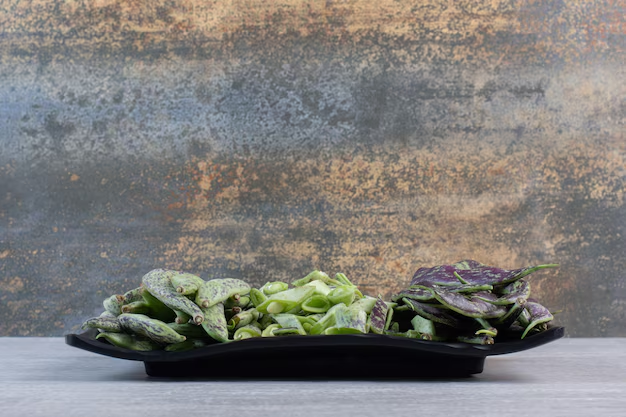Discover the Best Ways to Preserve Coriander Leaves in Your Refrigerator 🌿
Coriander leaves, also known as cilantro, are an integral part of many cuisines worldwide. Their vibrant green color and fresh aroma make them a popular choice in various dishes, from zesty salsas to hearty stews. However, keeping these delicate leaves fresh can be quite a challenge. If you've ever found yourself throwing away wilted or slimy coriander leaves after just a few days, you're not alone. Fortunately, by using the right preservation techniques, you can extend the shelf life of your coriander and ensure it retains its freshness for longer. Let's dive into the ways you can preserve coriander leaves in your refrigerator effectively.
Why Preserve Coriander Leaves?
Before we delve into the methods, it's important to understand why preserving coriander leaves effectively is crucial. Not only does it save you money by reducing waste, but it also enables you to enjoy the herb’s robust flavor and nutritional benefits whenever you need it. With the right care, coriander leaves can maintain their vitamin C, potassium, and antioxidant levels, contributing positively to your diet.
Preparing Coriander Leaves for Storage
Step 1: Selecting Fresh Coriander
The first step in preserving coriander leaves is choosing a fresh bunch. Look for leaves that are bright green and firm, avoiding any that appear yellowed or wilted. The stems should be crisp, not soft or slimy. Fresh coriander will typically have a strong, pleasant aroma, which is indicative of its flavor profile.
Step 2: Cleaning the Leaves
Once you have your fresh coriander, rinse the leaves gently under cold water to remove any dirt or debris. Be careful not to damage the delicate leaves during this process. After rinsing, shake off excess water and pat them dry with a clean kitchen towel or use a salad spinner for quick drying.
Best Techniques for Preserving Coriander in the Refrigerator
Method 1: Storing in a Jar with Water
This method is akin to keeping fresh flowers in a vase:
- Trim the stems: Cut off about an inch from the bottom of the stems to help the coriander absorb water more efficiently.
- Fill a glass jar: Pour about an inch of water into a jar or glass and place the coriander stems inside, ensuring the leaves remain above water.
- Cover with a plastic bag: Loosely cover the leaves and jar with a plastic bag, allowing for airflow.
- Refrigerate: Place the jar in the refrigerator. Change the water every few days to keep it fresh.
Benefits: This method allows coriander leaves to stay fresh for up to 2 weeks.
Method 2: Wrapping in a Damp Towel
For those who prefer a low-maintenance approach:
- Dampen a paper towel: Lightly mist a paper towel with water; avoid soaking.
- Wrap the coriander: Lay the coriander leaves in the towel gently and wrap them securely.
- Store in a plastic bag: Place the wrapped bundle into a resealable plastic bag and squeeze out as much air as possible.
- Refrigerate: Keep the bag in the crisper drawer of your refrigerator.
Benefits: Keeps the coriander moist and fresh for about 7 to 10 days.
Method 3: Using Airtight Containers
A practical option for space efficiency:
- Line the container: Use a piece of paper towel to line the bottom of an airtight container.
- Layer the coriander: Place coriander leaves inside, ensuring they are as flat as possible. Avoid packing them tightly to prevent bruising.
- Add another layer of paper towel: Finish with a top layer of paper towel before sealing the container.
- Refrigerate: Store in the fridge for up to 10 days.
Benefits: This provides an organized storage method and reduces the risk of spoilage.
Method 4: Freezing for Long Term Storage
For those who need even longer preservation:
- Blanching (optional): Quickly blanch the leaves in boiling water for about 10 seconds, then immediately transfer them to an ice bath.
- Dry completely: After drying, chop the leaves into smaller pieces if desired.
- Freeze in trays: Place chopped coriander into ice cube trays, cover with water, and freeze.
- Transfer to freezer bags: Once frozen, pop the cubes out and store them in a freezer bag.
Benefits: Frozen coriander can last for several months and is ideal for cooking.
Common Mistakes and How to Avoid Them
- Avoid crushing the leaves: Handle coriander gently to prevent bruising, which can speed up spoilage.
- Ensuring proper drying: Excess water promotes mold growth. Make sure leaves are thoroughly dried before storage.
- Monitoring humidity levels: Too little moisture and the leaves dry out; too much, and they turn slimy. Finding the balance is key.
A Quick Summary for Success 🌟
Here’s a handy reminder of how you can make the most of your coriander:
- 🌿 Fresh Pads: Ensure freshness from the start for best storage outcomes.
- 💧 Hydration: Use a jar or damp towel to maintain the right moisture level.
- 📦 Compact Storage: Opt for airtight containers to save space and preserve flavor.
- ❄️ Freeze Smartly: Use ice-cube methods for long-term storage with easy usability.
By following these steps, you can effectively extend the shelf life of your coriander, allowing you to enjoy its fresh and vibrant flavor for weeks. Whether it's for garnishing a dish or seasoning a soup, well-preserved coriander can transform any meal without the worry of spoilage.
Remember, the key is to tailor storage methods to how soon you plan to use the coriander. If you're using it frequently within a week, the jar or damp towel methods will suffice. For sporadic use over months, freezing is the way to go. Enjoy the herbaceous goodness whenever you need it!
